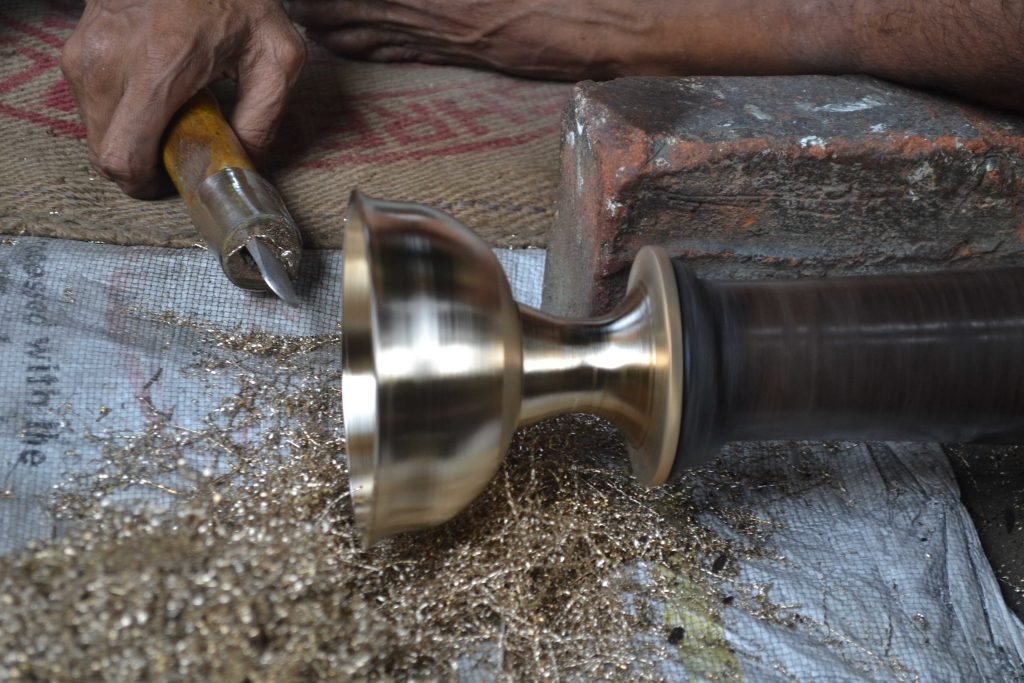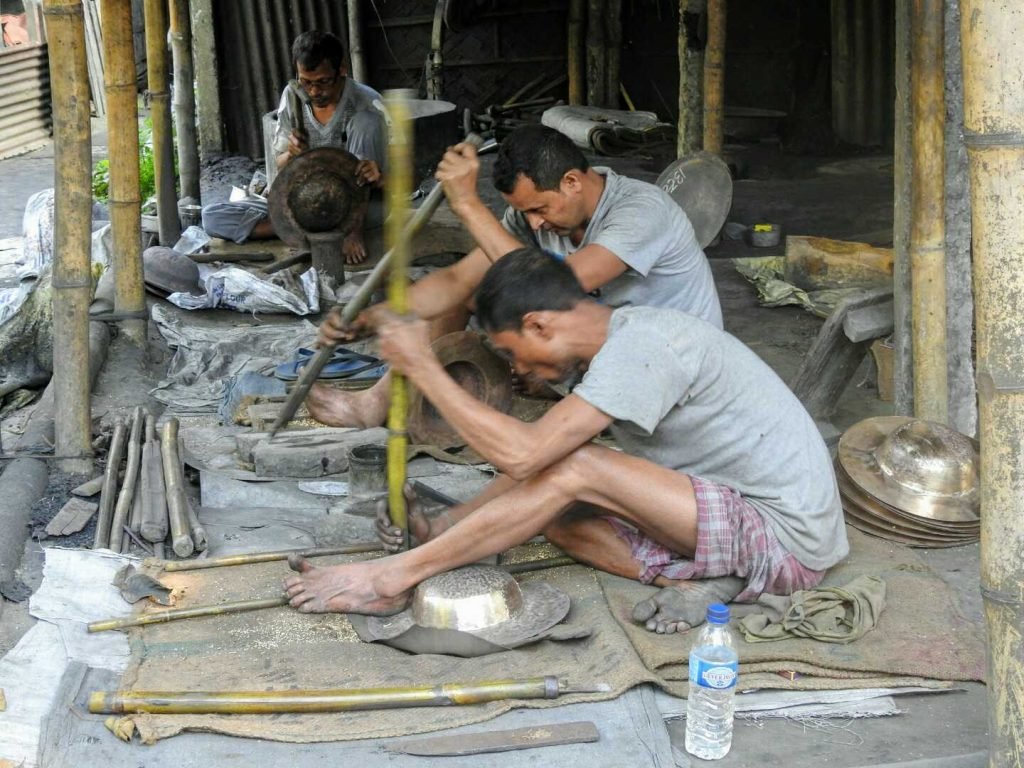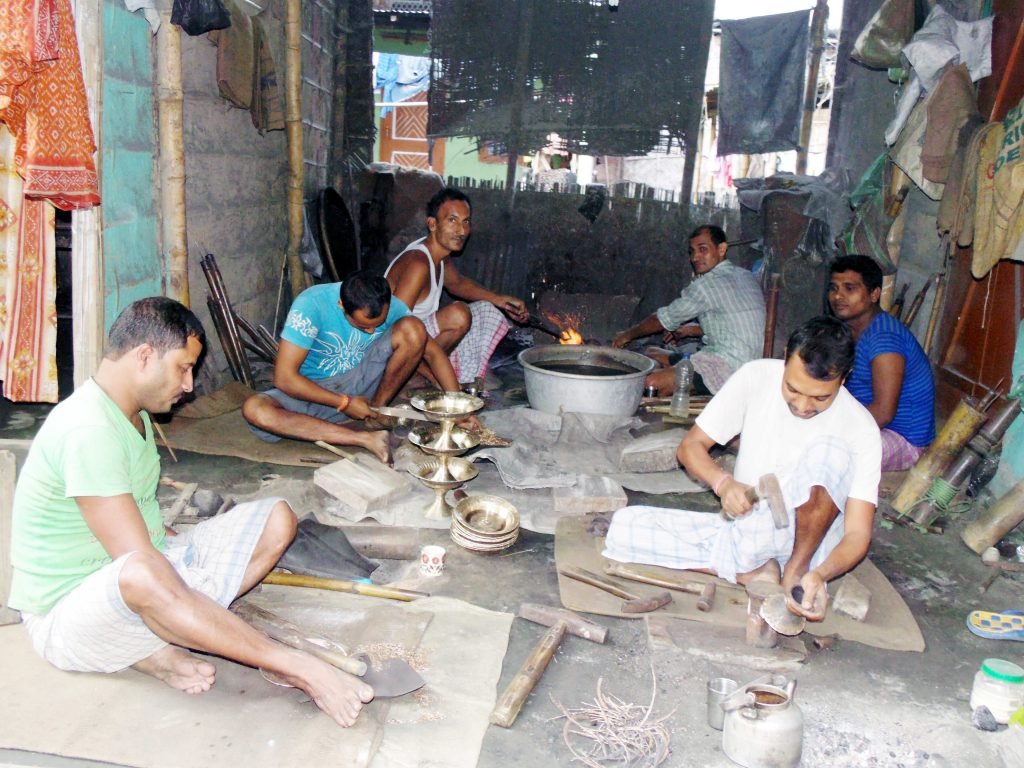In Assam, bell metal products are as ubiquitous as bamboo handicrafts. The second-largest handicraft of Assam, bell metal items and artifacts catch one’s attention because of how unique they appear to the eye. An alloy of copper and tin, bell metal, unlike bronze, has higher content of tin and hence, it is preferred by the Assamese craftsmen to make utensils for domestic and religious purpose.
It is in Sarthebari that one gets to see the manner in which the metal is crafted into singular pieces for use and display. Situated 90 kilometres from Guwahati, a visit to Sarthebari is not an experience that one would like to miss. It harks back to the charming old days of yore when craftsmen would use age-old tools to melt and shape metal and then mould and polish them into handicrafts. The technology is not the state-of-the-art, but simple and wondrous. And watching craftsmen employ anvils, hammers, and pincers, to shape and create objects can be joyous.

Tip: Eating healthy meals from Kansa / Kanh /Bell-metal vessel enhances our immunity system.
The best time to visit Sarthebari is in winter and Spring, since weather is cool and dry. In the summer months, it is advisable to head out early in the morning and return late in the evening.
On way one can visit any of the villages of Mughkuchi or Tilana etc., to see how the Assamese jaapi is made. A hub of jaapi-making, these villages produce thousand of this head indigenous headgear. Made from bundles of tokou leaves (palm leaves) and tightly woven-woven bamboo, the jaapii is no longer a farmer’s hat only. Today, it is the centerpiece during Bihu dance performances and other socio-religious events.
Exploring the crafts and arts of Assam can be an awesome experience. Sarthebari is one such place, which offers a great experience. Less-known, but immensely worthy a visit.


